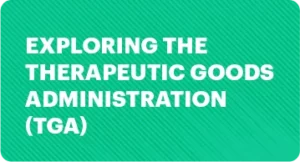Get Ready for the International Recognition Framework (IRF): Understand Your Commitments
Introduction to the International Recognition Framework (IRF)
The International Recognition Framework (IRF) is an important tool for organizations as it sets out requirements for compliance with international standards. It provides a structure that encourages organizations to keep up with the latest trends, technologies and regulations. Organizations must be aware of the IRF in order to remain compliant and competitive.
The IRF ensures global uniformity among organizations by providing a set of standards that everyone must comply with. This helps maintain fair competition, regardless of size or geographic location. It also assists organizations in their efforts to increase performance and ensure accountability.
Scope of the IRF
The International Recognition Framework (IRF) is an initiative designed to ensure structured recognition of qualifications across countries. The primary aim of the IRF is to allow employers to more easily recognise the qualifications of employees who have studied or worked abroad and to ensure that they are able to benefit from their experience no matter where it was acquired.
The IRF establishes principles for the recognition of international qualifications, including transparency, non-discrimination and mutual respect between authorities. It places emphasis on the need for open access to education, allows for further collaboration between countries and provides assurance of international standards.
The implications of the IRF are far-reaching. It will create a global framework for the mutual recognition of qualifications, thus allowing organisations to better integrate international talent into their workforce. As such, it is important for organisations to be aware of and ready to implement the IRF.
Review of the IRF’s Core Components
The International Recognition Framework (IRF) is a set of standards established to help organizations ensure their recognition processes are globally applicable and uniformly respected. It consists of four main components:
- Frameworks for recognition: Guidelines for entities to create robust recognition processes to ensure consistency and fairness.
- Eligibility requirements: Requirements that must be met by organizations in order to achieve recognition.
- Assessment criteria: Criteria used to evaluate the performance of organizations against the eligibility requirements.
- Monitoring protocols: Protocols used to monitor an organization’s performance against the criteria and eligibility requirements.
The purpose of the IRF is to provide a common platform for organizations to assess and recognize their achievements and record them worldwide. By adhering to this framework, organizations can ensure their recognition processes are internationally recognized and respected.
Exploring Compliance Requirements
Organizations that want to become compliant with the International Recognition Framework (IRF) must be aware of their commitments when it comes to implementing the IRF. Compliance requires organizations to understand and adhere to the principles of the framework within their operations, processes, and activities.
Organizations that wish to become compliant must agree to certain sets of principles, such as transparency, accountability, efficiency, and equity. These principles must be adhered to in order for organizations to achieve the desired level of compliance.
Organizations must also take into account other commitments, such as legal considerations, security measures, and geographical limitations. These factors must be taken into account and addressed by the organization during the process of becoming compliant.
What’s the Timeline?
Meeting the International Recognition Framework (IRF) compliance requirements can seem daunting for organizations. From defining and implementing the necessary policies to tracking progress, it’s important to have a plan in place to reach compliance. Having an understanding of the timeline for reaching compliance can help organizations stay on track and measure their success.
When setting out to achieve IRF compliance, the first step is to have a clear understanding of the scope of the framework. This means assessing the risks that your organization could face and determining which elements of the IRF need to be implemented. Once identified, organizations can begin plotting out a timeline for achieving compliance.
Each organization has its own unique set of needs and goals; consequently, the timeline for reaching compliance may vary. Generally speaking, the process can take between six and eighteen months, depending on the complexity of the organization and the number of adjustments it requires. There are several tools that organizations can use throughout this process, such as:
- IRF Self-Assessment Tool – This tool can help organizations confirm that their IRF implementation is up to code and any areas of risk are addressed.
- IRF Gap Analysis Tool – Organizations can use this tool to assess their current IRF compliance and identify any areas of non-compliance or potential risk.
- IRF Verification Reports – Reports are available to confirm that an organization is compliant with the IRF standard.
Having a clear timeline and strategic plan in place is crucial for organizations looking to achieve IRF compliance. As such, it’s important to incorporate regular review and evaluating sessions into the process in order to ensure that all aspects of the framework are being addressed.
Managing the Recognition Process
Once organizations have taken steps to assess their level of compliance, it is important that they create and adhere to policies that will help them manage the recognition process. This is an important step in achieving compliance and staying up-to-date with new developments. Proper management also helps organizations manage potential conflicts of interest that may arise from the implementation of the IRF.
Organizations should develop policy frameworks that include details about the recognition process, and review them regularly to evaluate their effectiveness. Policies should also be in place for handling appeals and disputes, as well as for monitoring any changes or updates that may be issued by the IRF.
Organizations must also make sure they are in line with the guidelines provided by the IRF. Regularly reviewing policies can help identify any discrepancies or areas of improvement, as well as ensure that processes remain compliant. It is also important to stay aware of any potential conflicts of interest and take steps to prevent them.
In order to ensure proper management of the recognition process, organizations should identify the personnel responsible for overseeing it. This person or team should be knowledgeable about the IRF and the organization’s policies, and be able to monitor and update policies and procedures as needed.
Evaluating Your Readiness
Once you have a better understanding of the IRF and its scope, it is important to assess your organization’s level of compliance and identify any associated risks. Are there any areas in which you are not meeting the requirements set out by the IRF? Do you need to make any changes or adjustments to your existing practices and procedures?
Here are some questions to help you evaluate your organization’s readiness for the IRF:
- Are our processes and policies up-to-date and compliant with the IRF?
- Do we have the necessary resources in place to meet the IRF’s compliance requirements?
- Do we have an internal system in place to monitor and maintain our level of compliance?
- Do we know how to respond to potential conflicts of interest?
- Have we considered any legal implications that may arise with the implementation of the IRF?
- Are our employees adequately trained to understand and meet the requirements of the IRF?
When assessing your organization’s level of compliance, it is important to consider potential risks and the implications of non-compliance. If there are any areas in which you are unable to meet the required standards, it is important to identify and address them as soon as possible.
Understanding Conflicts of Interest
When it comes to the International Recognition Framework (IRF), organizations need to be aware of any potential conflicts of interest so that they can properly navigate the process of achieving compliance. Conflicts of interest can arise in a variety of scenarios, and it is essential for organizations to recognize and address them in order to remain compliant with the IRF.
Conflicts of interest can arise when an individual or organization has two or more competing interests, financial relationships, or other motives that can potentially lead to a breach of the IRF’s regulations. Organizations should take steps to identify and manage potential conflicts of interests in order to avoid any potential violations of the IRF’s requirements.
For example, organizations should consider if they have any relationships with external entities that might be in direct competition with one another. Organizations should also be aware of any potential financial ties that could give rise to potential conflicts of interest. These types of conflicts of interest can be difficult to identify, and organizations must take steps to ensure that they are complying with the IRF’s regulations in order to remain compliant.
Developing an Ongoing Action Plan
Organizations are expected to continue with their efforts in order to reach compliance with the International Recognition Framework (IRF). To ensure continuous improvement, organizations need to consider various strategies for ongoing compliance. These strategies should include:
- Developing policies and procedures that address key aspects of the IRF
- Creating a governance structure that is responsible for monitoring compliance
- Carrying out regular reviews and audits to ensure continual alignment
- Implementing an effective communication system to ensure staff are kept up-to-date
- Creating an action plan that outlines steps to take in case of a breach
- Documenting successes and failures to inform and improve future strategies
Legal Considerations
Organizations must be aware of certain legal considerations when implementing the International Recognition Framework (IRF). This is to ensure that their operations comply with the laws of the countries in which they operate and with the principles of the IRF.
The IRF has certain principles that organizations must abide by in order to remain compliant. These include: the promotion of equity, respect for human rights, an ethical approach to business, the protection of the environment, and a commitment to sustainable development.
Organizations must also be aware of any potential conflicts of interest that may arise due to the implementation of the IRF, and take steps to resolve them. They must also ensure that their internal processes related to the recognition process are carried out in accordance with any applicable laws.
To remain compliant, organizations must also understand the potential liabilities associated with their actions. These could include financial, legal, and reputational risks that could result from failing to meet the requirements of the IRF.
Finally, organizations must seek legal advice when necessary in order to ensure that their efforts to comply with the IRF are in line with applicable laws. Proper research is essential to ensure that all legal considerations are taken into account.
The International Recognition Framework (IRF) is an important part of ensuring a global standard for recognition and compliance. Organizations must be aware of its core components and ensure they are compliant in order to meet the requirements as set out by the IRF. This guide has provided an overview of the key components that comprise the IRF, what commitments organizations must meet and the timeline for achieving IRF compliance. It has also discussed ways in which organizations can assess their readiness and manage the recognition process. Additionally, potential conflicts of interest and legal considerations have been highlighted.
rganizations should develop an ongoing action plan to ensure continuous improvement with regard to their IRF compliance efforts. It is important to be aware of the resources available to assist throughout the implementation stage and develop a better understanding of the IRF principles. After reading this guide, organizations should have a clear view of what they need to do to implement the IRF and achieve compliance.
We hope that this guide has been informative and informative in helping organizations understand the implications of the IRF and the actions that need to be taken to become compliant. For additional reference, please see the links below.
Links for additional reference:
- International Recognition Framework (IRF): https://www.irmi.com/term/insurance-glossary/international-recognition-framework-irf
- Understanding Insurance’s International Recognition Framework: https://www.propertycasualty360.com/2019/05/31/understanding-insurances-international-recognition-framew/
- Frequently Asked Questions on the International Recogniton Framework: https://www.irmi.com/articles/expert-commentary/frequently-asked-questions-on-the-international-recognition-framework
Implementation Guide
Organizations need to take certain steps to ensure compliance with the International Recognition Framework (IRF). The following is an outline of the steps that need to be taken:
- Step 1: Understand the framework. Read through the IRF and gain an understanding of its scope, objectives, and core components.
- Step 2: Assess compliance requirements. Evaluate the commitments necessary to comply with the IRF and assess the timeline for achieving compliance.
- Step 3: Manage the recognition process. Implement policies to assist in managing the recognition process and mitigating any potential conflicts of interest.
- Step 4: Evaluate readiness. Determine if the organization is ready for implementation and identify any additional risks or areas of improvement.
- Step 5: Develop an action plan. Utilize existing tools or create new ones to ensure continuous improvement and ongoing compliance.
- Step 6: Address legal considerations. Investigate any legal issues associated with implementing the IRF and address them accordingly.
Once organizations have gone through these steps, they should be able to confidently implement the IRF and achieve compliance.
FAQs about the International Recognition Framework (IRF)
1. What is the International Recognition Framework (IRF)?
The International Recognition Framework (IRF) is a set of standards designed to ensure global recognition for the performance and achievement of organizations in multiple countries
2. What is the overall purpose of the IRF?
The primary aim of the IRF is to enable organizations to earn international recognition for their performance, and to ensure that recognition is effectively transferable between multiple countries.
3. What are the key components of the IRF?
The core components of the IRF include policy development, compliance management, conflict resolution, legal considerations, and ongoing action plans.
4. What kind of commitments must organizations fulfill in order to comply with the IRF?
Organizations must commit to developing policies to guide their implementation and administration of the IRF, and to managing their compliance with the framework on an ongoing basis.
5. What timeline should organizations consider for achieving IRF compliance?
Organizations should create a timeline based upon their own goals and resources. However, general timelines typically range from 6-12 months.
6. Are there any potential conflicts of interest associated with the IRF?
Yes, organizations should be aware of any potential conflicts of interest that may arise when implementing the IRF. These issues should be addressed and managed in accordance with the organization’s policies.
7. How can organizations assess their level of compliance with the IRF?
Organizations can assess their level of compliance with the IRF by conducting regular reviews of their policies and procedures, performance metrics, and legal considerations. Additionally, organizations should also develop management structures and strategies for ongoing improvement.





